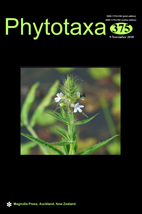Type: Article
Published: 2018-11-13
Page range: 221–228
Abstract views: 18
PDF downloaded: 1
Two new species of Lepanthes (Pleurothallidinae; Orchidaceae) from Andean forest remnants in Ibarra, Ecuador
Verde.ec, Arupos, E2 y Av. Yaloman, Quito, Ecuador
Herbario Nacional del Ecuador, Instituto Nacional de Biodiversidad, Pasaje Rumipamba 341 y Av. de los Shyris, 170135, Quito, Pichincha, Ecuador
Pontificia Universidad Católica del Ecuador - Sede Ibarra, Av. Jorge Guzman Rueda y Av. Aurelio Espinosa Polit, Ciudadela La Victoria, Ibarra, Ecuador
Verde.ec, Arupos, E2 y Av. Yaloman, Quito, Ecuador
Pontificia Universidad Católica del Ecuador - Sede Ibarra, Av. Jorge Guzman Rueda y Av. Aurelio Espinosa Polit, Ciudadela La Victoria, Ibarra, Ecuador
La Carbonería
Ecuadorean orchids
Lepanthes ibarrense
Lepanthes obandoi
Monocots

